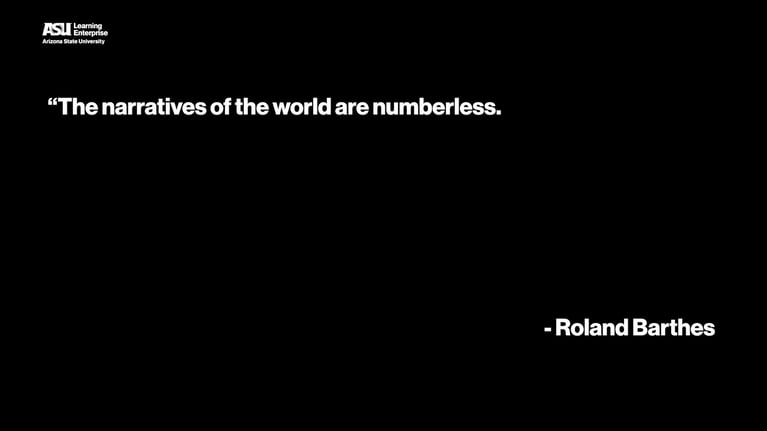Narratives play a ubiquitous role in shaping our world and individual identities. Defining narrative poses challenges due to its contested nature. It involves the representation of events or sequences of events through various mediums like images, words, and videos. Gaining an understanding of narratives is essential to grasp their significance and influence on our perception of reality.
We find narratives everywhere. They help create the world we live in. They even help create ourselves.
But what is a narrative? How do we define narrative?
Narrative is easy to define. It must be. There are so many definitions for it. Narrative is as easy to define as art or justice or beauty or freedom or the good.
The problem with defining these words isn’t arriving at a definition. The problem is arriving at a definition that everyone can agree on.
And this is extremely difficult.
It may be that narrative is what’s sometimes called an “essentially contested concept.” An essentially contested concept is any term or concept that resists authoritative definitions because the meaning of the term or concept is subject to seemingly endless debate and disputation. Words like equality, person, or democracy are examples of essentially contested concepts. Narrative may be another of those.
Here are a few definitions of narrative:
From theorist Gerard Genette: “One will define narrative without difficulty as the representation of an event or of a sequence of events.”
Author H. Porter Abbott says: “Simply put, narrative is the representation of an event or a series of events.”
According to scholar Gerald Prince: “Narrative is the representation of at least two real or fictive events in a time sequence.”
Notice something about these?
They all stipulate that a narrative involves events. Events are anything that happens. Events create a change in the world of the story.
Representation is a trickier word. A representation is something that stands in for or takes the place of something else. The thing that does the standing in is often some kind of sign, like images or written or spoken words.
Many countries are said to have “representative democracies.” This means that the people don’t themselves vote on every bill, law, or issue that may arise. Rather, the people elect “representatives” who will stand in for them and do the voting.
The written word “dog” stands in for the concept of dog, or for an actual dog in the world. Images can do this work, too. We might use emoji to stand in for the concept of smiling, laughing, crying, dogs, or other concepts. Similarly, a picture or video of Beyonce is not Beyonce herself, but stands in for her in her absence.
A narrative is a representation of an event or series of events. That definition may not satisfy everyone, but it’s good enough for our purposes today.


